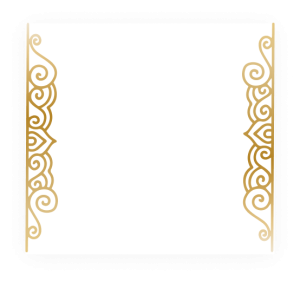
A short encyclopedia of
Signs and symbols of
Kazakh culture

In almost all cultures of the world, white is considered sacred, a symbol of divinity, holiness, purity and wisdom, and has been revered since ancient times. In poetry, it is referred to as the “mother colour” from which all other colours are derived. In ancient Egypt, white was associated with rebirth and the cult of the dead, and in ancient Rome it was considered a status colour in which only aristocrats and high officials dressed.
Among the Turkic-Mongol peoples, the colour white is associated with all sorts of beliefs, prohibitions, omens and superstitions. First and foremost, this refers to milk and dairy products, commonly called “aq” (aq as /white food), which must not be spilled. Milk/kumys is a component of ritual acts on the Nauryz – “aq kobeisin!” or “aq mol bolsyn!”, and also things/objects are sprinkled with it: a banner, a new carpet, etc.
In the ritual sphere, special importance was given to the colour white: The chosen Khan was lifted up on a white felt, the bride and groom sat on it during wedding ceremonies, etc. White/light-coloured animals were preferred as sacrificial animals, and white-coloured birds such as the swan, skylark and others were elevated to the rank of untouchable sacred birds.
For Kazakhs, white is still a positive, pure colour. For example, aq könil (bright soul), aq zhurek (good heart), aq niet (good wishes), etc. In some cases, white is used as a symbol of holiness, honour and recognition: aq tüeniñ qarny zharylu (good news), aq tileu (pure wishes); a symbol of holiness: aq süt (mother’s milk), aq saqal (elder, aksakal), aq zhaulyk (mother), etc.
In addition, white serves as a symbol of kinship, i.e., belonging to an aristocratic clan: aq süiek (aristocrat, white bones), aq orda (khan horde), aq üi (ruler’s house), etc.
The adjective “aq” can also mean “beautiful”: aq tamaq (delicate neck), aqqu moiyn (white neck of the swan), etc.
White in Kazakh culture is a symbol of purity, righteousness and high social status. In applied arts, a chest decorated with silver or metal plates was called “aq sandyk” (white chest).
Among Kazakhs there are some customs connected with whiteness:
Aq kuiu – luring a snake out of the house; aq belbeu – a carrying belt of white cloth worn by male relatives of the deceased; aq bailau (aqtiq) – the tradition of tying strips of white cloth to trees growing in sacred places or presenting a piece of cloth in mazars; aq tayakka süienu – using a white staff in funeral rites, etc.
The word “aq” among Turkic peoples was associated with the West, with the western side of the world, as well as with the meaning “flowing, flowing fast”. In the Kazakh language, aq is a synonym for the colour boz (grey, whitish). In the understanding of the people, any light surface is considered white. The image of white (grey) horses and mares is popular not only in Turkic mythology and folklore, but also in world culture in general.
Combinations of white with other colours are of no small importance in Kazakh culture. For example, the white and red pattern of woven baskur ribbons was considered magical and meant “majestic life force”. White in combination with other colours had the magical function of a talisman, which was reflected in the women’s headgear, the kimeshek. Young women wore a more colourful combination of red, green and other colours on a white background. Older women decorated their kimeshek with a combination of white and pastel, softer tones. It is believed that in the first case the bright decoration symbolised youth, fertility, etc., and in the second a quiet fading, a kind of humility before inevitable old age.
Equally popular among Central Asian peoples was the combination of white and blue, which can be found in architecture (the combination is used on facade panels) and in ceramics. For example, a bowl with white and blue colouring was called “toi legen/lyagan”,” which was specially ordered from artisans for traditional family celebrations (weddings, circumcisions, etc.).

